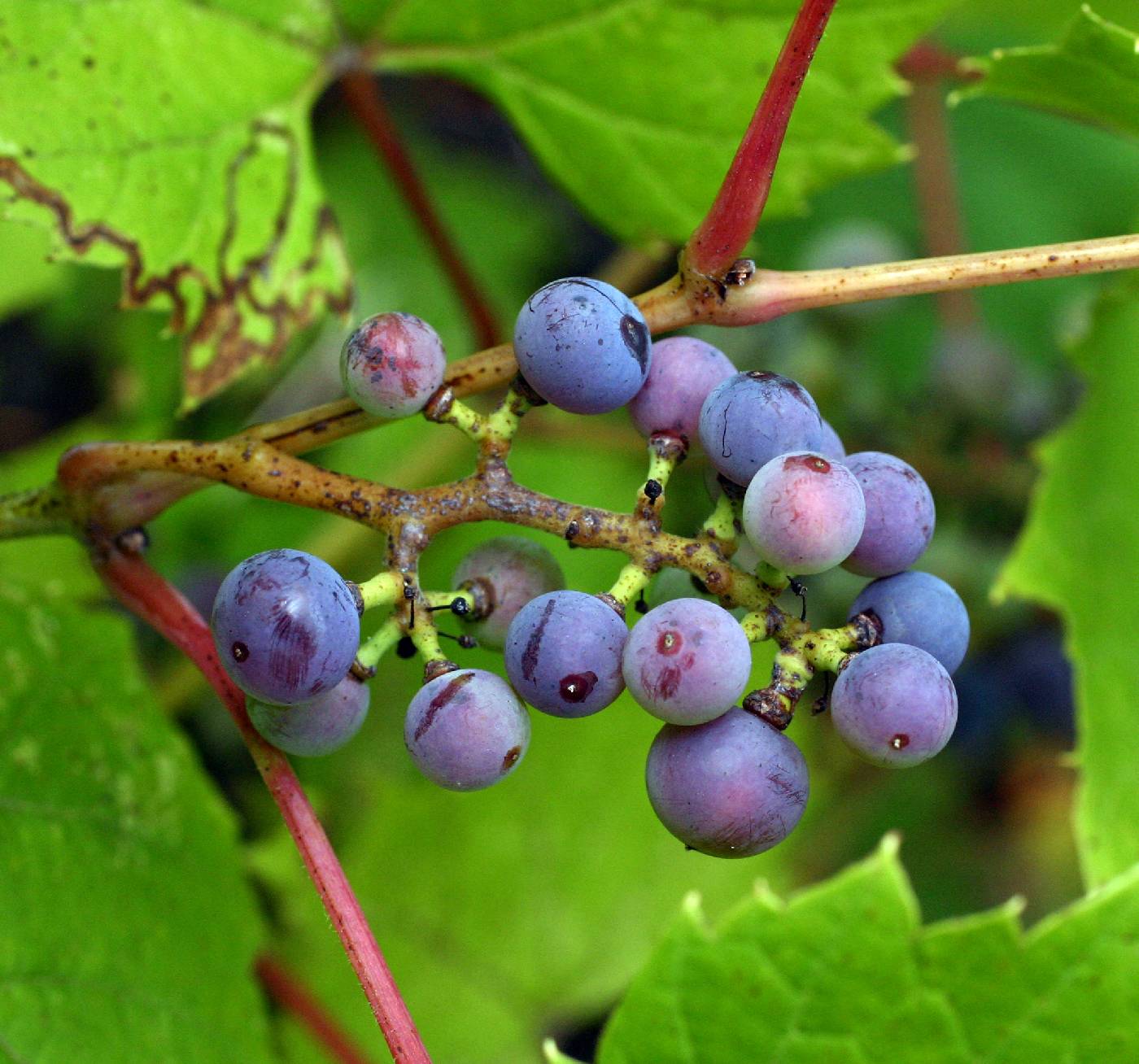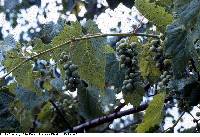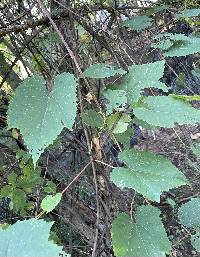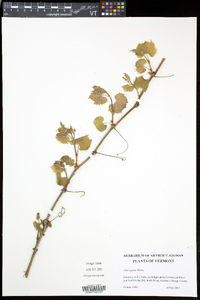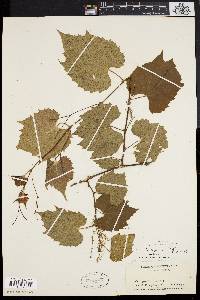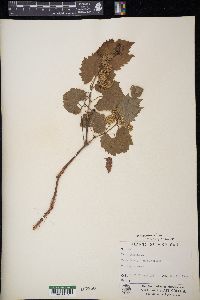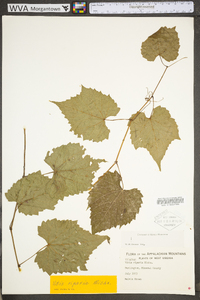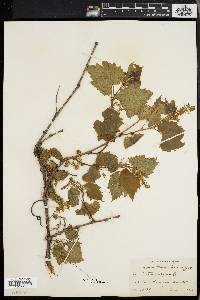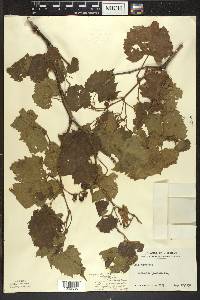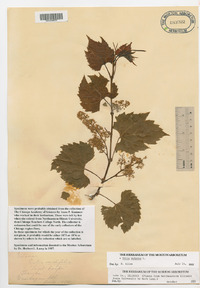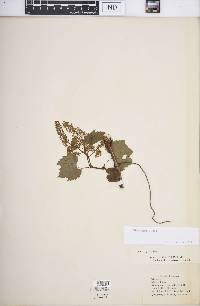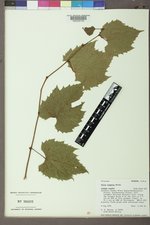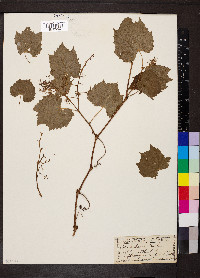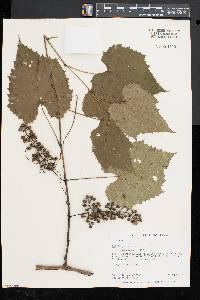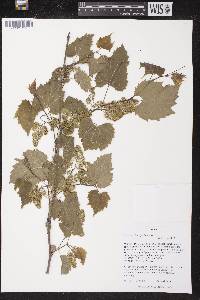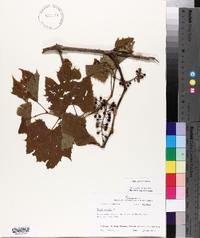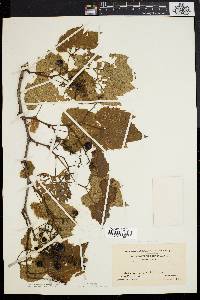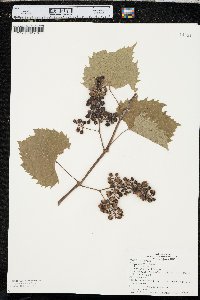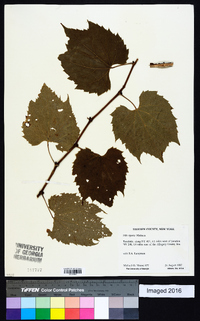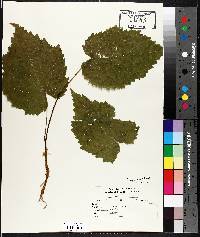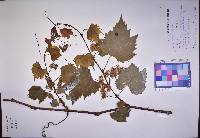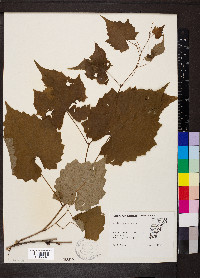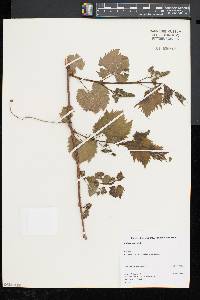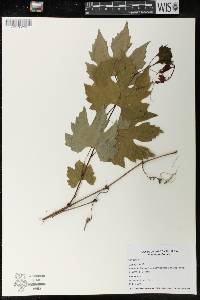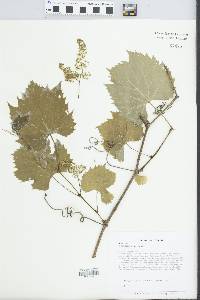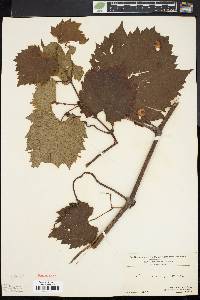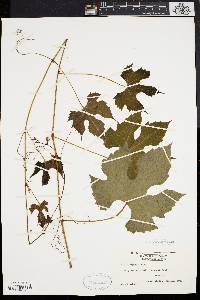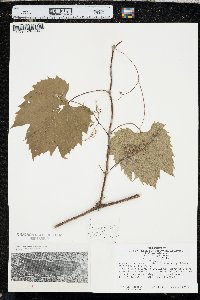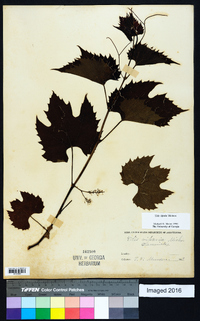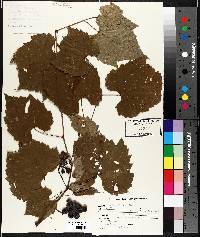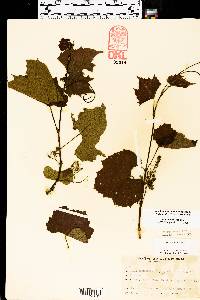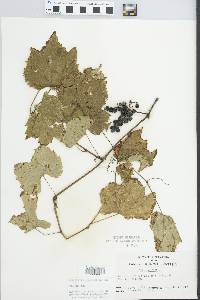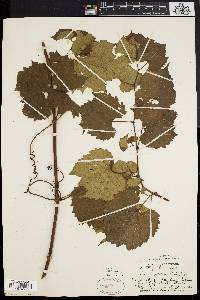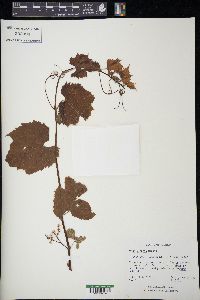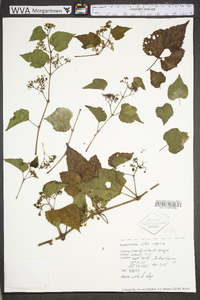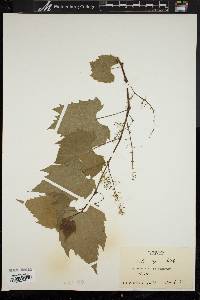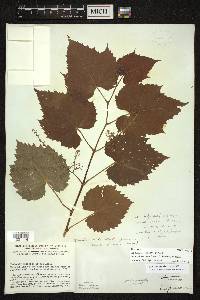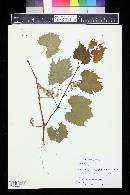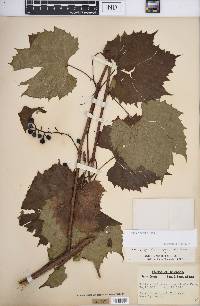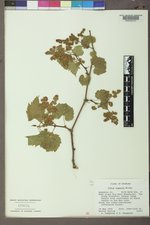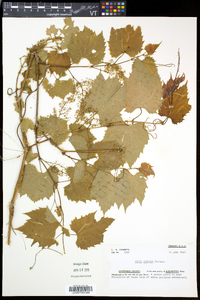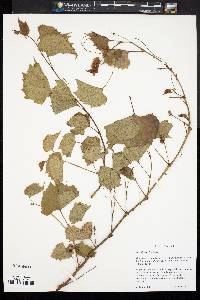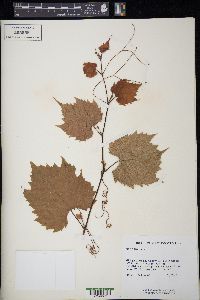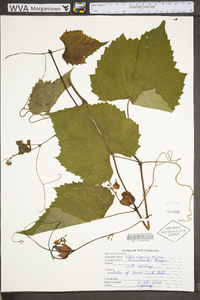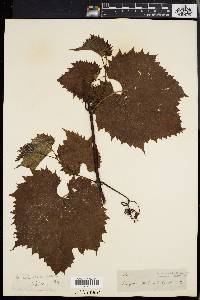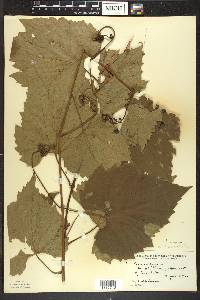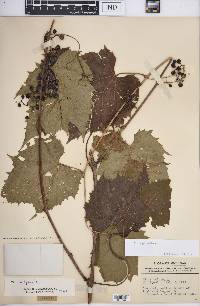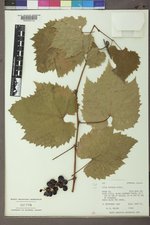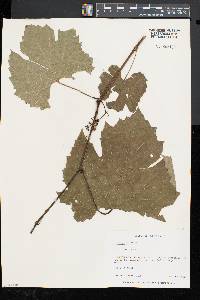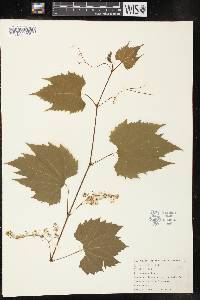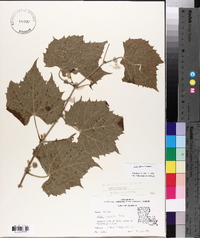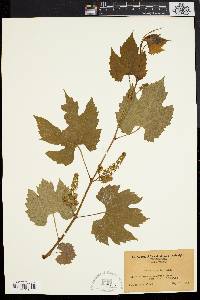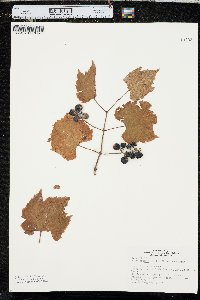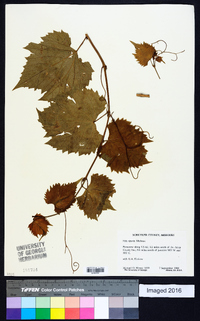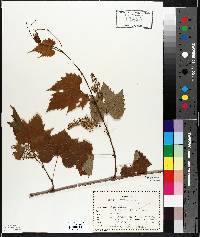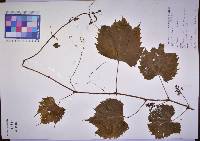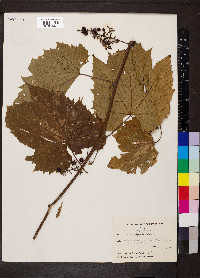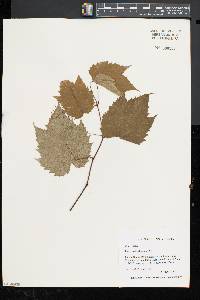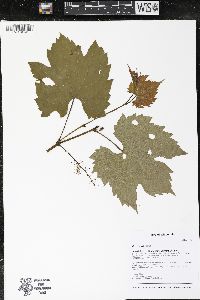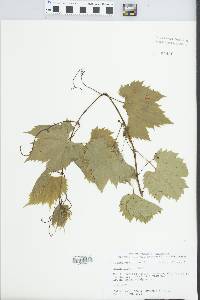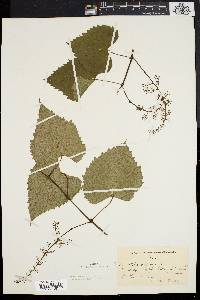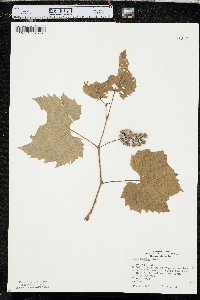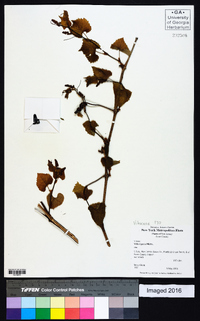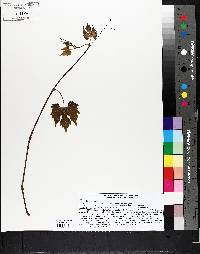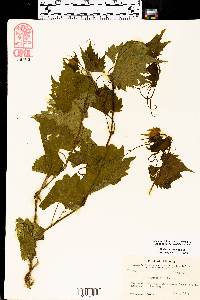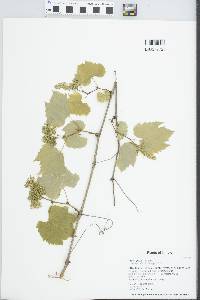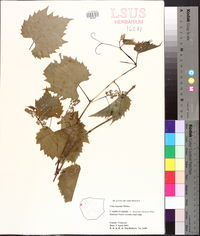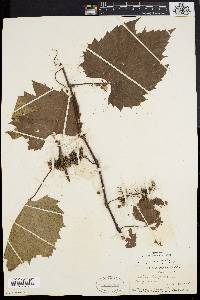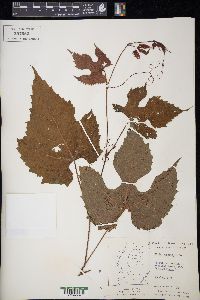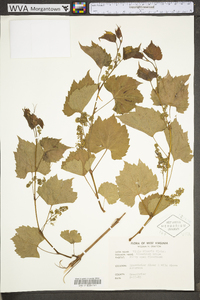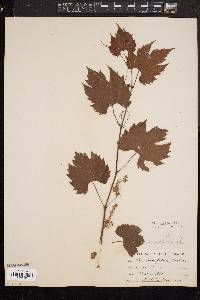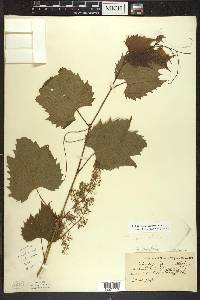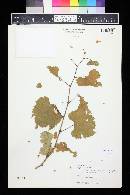Vitis riparia
|
|
|
|
Family: Vitaceae
River-Bank Grape, more...riverbank grape
[Vitis vulpina var. riparia (Michx.) Regel, moreVitis vulpina var. syrticola Fernald & Wiegand] |
Perennial woody vine to 22.9 m long Stem: high-climbing, green to gray or brown, lightly ridged, hairless or lightly hairy, becoming reddish brown and shredding in long thin strips on very old growth, inner spongy part of stem (pith) chambered (0.5 - 2 mm thick) at nodes. Leaves: alternate, stalked, yellowish green above, paler beneath, 10 - 20 cm long, rounded to egg-shaped with a heart-shaped base, usually having three lobes angled toward the tip, coarsely toothed with teeth longer than wide and concave on one or both sides, hairy beneath when young with veins and the margin remaining hairy with age. Inflorescence: functionally either male or female and found on the same plant (sub-monoecious), borne opposite most leaves on current year's growth (commonly lacking every third leaf), 5- 10 cm long. Flowers: yellowish green, tiny, five-petaled. The functionally male flowers have five long, erect stamens and a poorly developed pistil. Functionally female flowers have a well-developed pistil and five functionless, short, reflexed stamens. Fruit: a juicy berry borne in drooping clusters, purple to black, 6 - 12 mm long, spherical, covered with a whitish waxy coating (glaucous). The seeds are reddish brown, about 3 mm long, and egg-shaped. Tendrils: opposite most leaves, commonly lacking every third leaf. Similar species: Vitis aestivalis and Vitis cinerea var. cinerea have tendrils or inflorescences at no more than two successive nodes. Vitis labrusca has tendrils or inflorescences at three or more successive nodes and a lower leaf surface that remains densely hairy. Vitis vulpina has fruit that usually lacks a whitish waxy coating and leaves with teeth that are wider than long. Flowering: mid May to late June Habitat and ecology: Common in sandy woods, fallow fields, sloping dunes near lake Michigan, and along fencerows. Occurence in the Chicago region: native Notes: Birds and mammals eat the fruit of this species, while deer feed on the leaves. Catbirds and cardinals use strips of the bark to build their nests. Etymology: Vitis is the Latin word for vine. Riparia means "of riverbanks." Author: The Morton Arboretum High-climbing vine, the pith interrupted by diaphragms 0.5-1 (or at maturity 2) mm thick; lvs rotund, 1-2 dm, usually 3-lobed (the lobes mostly pointing forward), coarsely and sharply serrate (the teeth commonly longer than wide, with one or both sides concave), pubescent beneath when young, permanently so in the vein-axils and sometimes along the veins; panicles 5-10 cm; fr black, heavily glaucous, 6-12 mm; 2n=38. Moist woods, roadsides, and thickets; N.B. and Que. to Mont., s. to Va., Tenn., Ark., and Tex. (V. vulpina, misapplied) Perhaps properly to be submerged in V. vulpina. Gleason, Henry A. & Cronquist, Arthur J. 1991. Manual of vascular plants of northeastern United States and adjacent Canada. lxxv + 910 pp. ©The New York Botanical Garden. All rights reserved. Used by permission. From Flora of the Indiana Dunes (1930) - Donald C. Peattie Referred to as V. vulpina (River-bank Grape.) Large, high-climbing vine with shreddy bark; branchlets finally smooth; leaves about as broad as long, often 3-lobed, smooth above at maturity but beneath somewhat white-hairy on the principal veins, teeth few, larg; berries black, with a dense bloom, 9-12 mm. thick. - In woods, and climbing over trees and shrubs in the tamarack bogs, in the high dune country. Flowers in May and June, fruit in August, acid. Var. syrticola Fernald & Wiegand. Dwarfed, mostly prostrate; stems sharply zizag; leaves wider; hairs colorless, not white; branchlets pubescent until maturity.- On the crests of high dunes. From Flora of Indiana (1940) by Charles C. Deam Throughout the state. Although we have few specimens from the unglaciated area, it occurs there at least along the Ohio river. It prefers alluvial soil. [Vitis riparia var. syrticola] is merely a more pubescent form occurring on the dunes along Lake Michigan and found once along the Kankakee River in Lake County. …… Indiana Coefficient of Conservatism: C = 1 Wetland Indicator Status: FACW |

